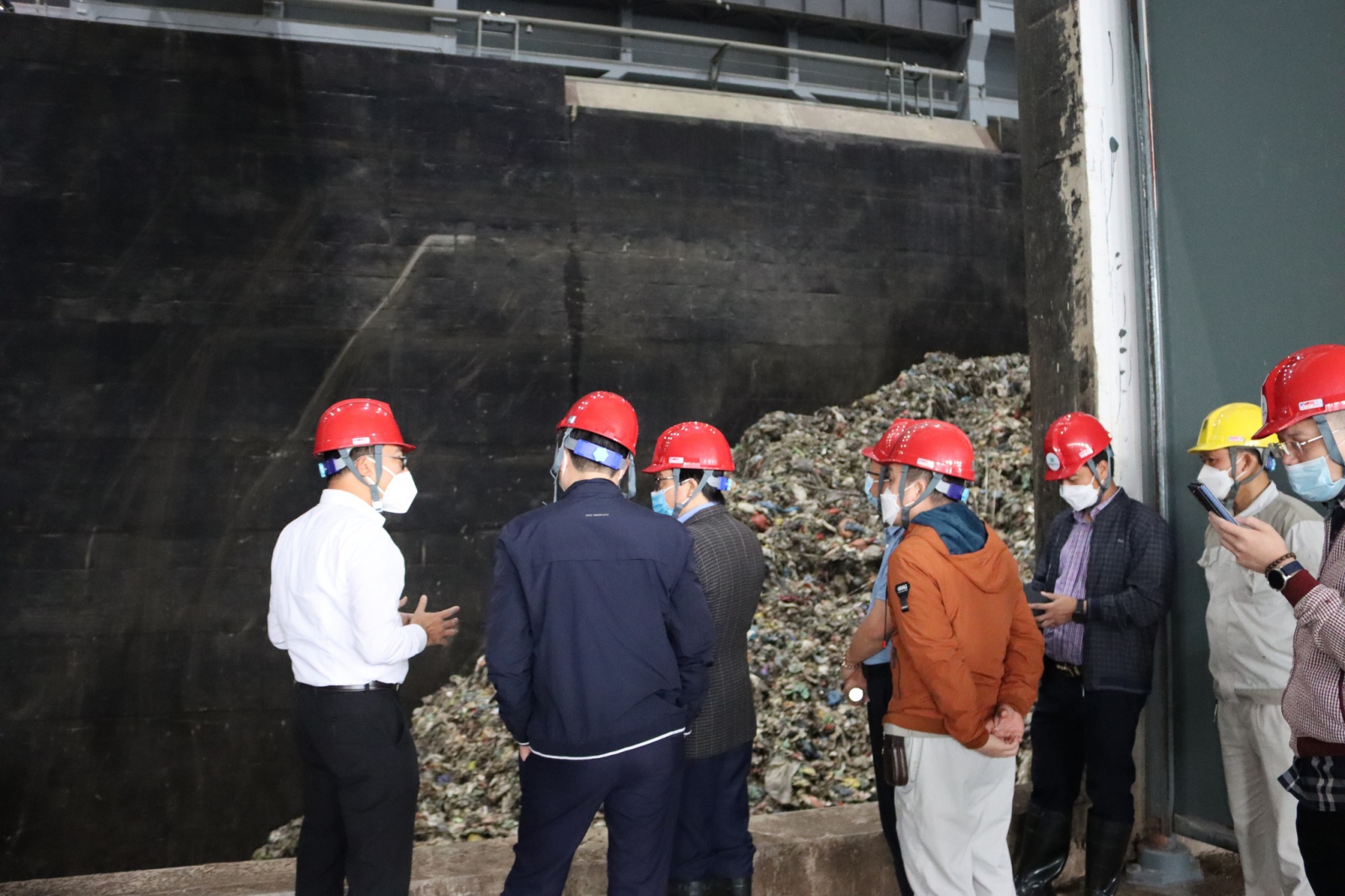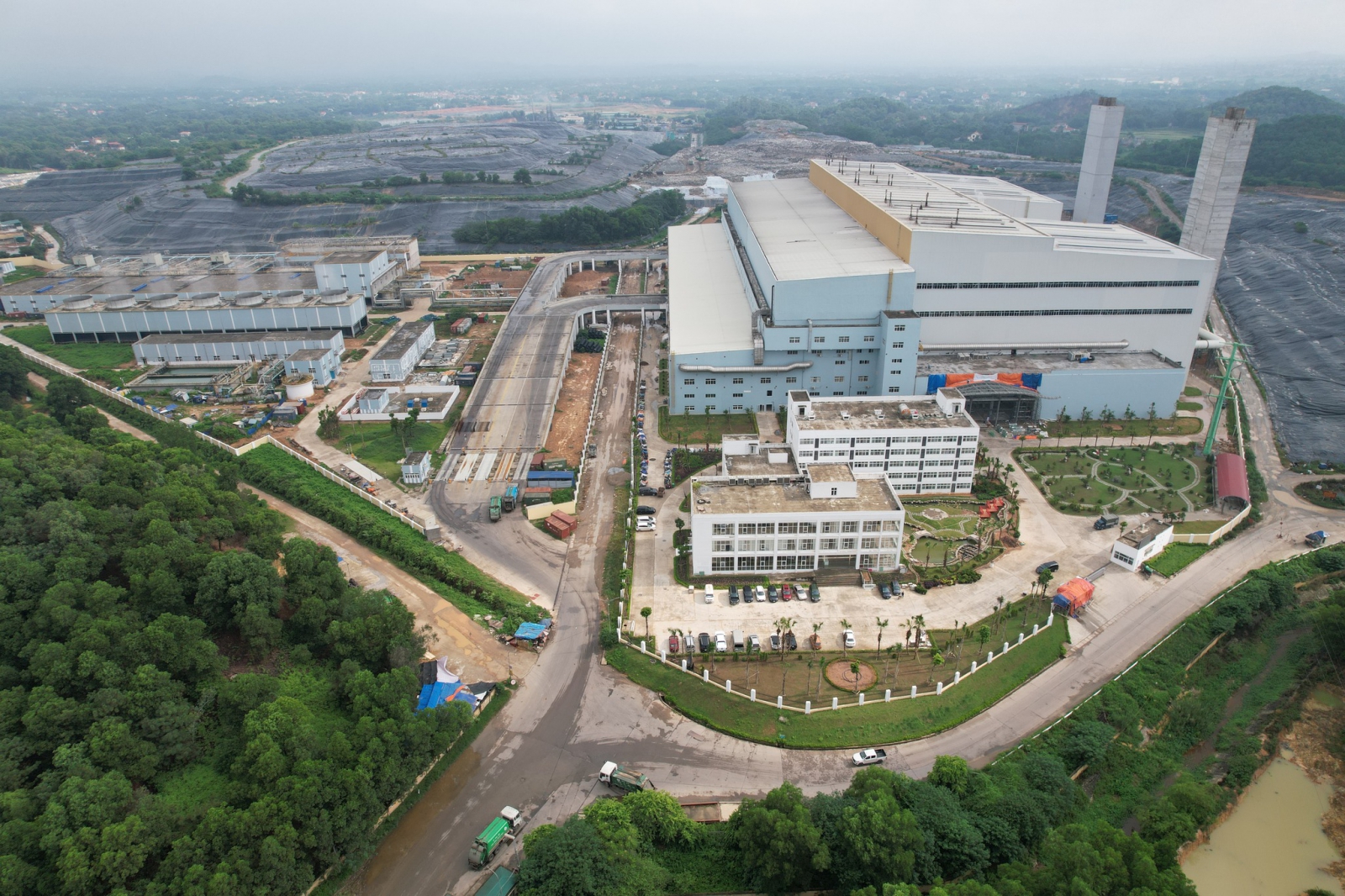
Waste-to-energy facilities manage environmental problems while promoting economic development, gaining local government support. (Photo: Soc Son Waste-to-Energy Plant)
Vietnam generates nearly 70,000 tons of waste daily, with over 70% sent to landfills. However, as available land becomes increasingly scarce, waste-to-energy plants, which provide electricity during the waste processing, are considered an effective solution to balance environmental concerns with economic development. These plants are particularly favored by local governments in densely populated areas like Hanoi and Ho Chi Minh City, where waste volumes are higher.
Vietnam’s largest waste-to-energy plant can address 70% of Hanoi’s waste
The Soc Son Waste-to-Energy Plant in Hanoi is the second largest of its kind in the world, only behind China’s Shenzhen, and the largest in Vietnam. The plant has 16 waste unloading gates to accommodate different types of garbage trucks and can process 4,000 to 5,000 tons of waste daily, generating 90MW of electricity. Since beginning operations in 2022, it has processed 1.46 million tons of household solid waste, addressing over 70% of Hanoi’s waste.
By the end of this year, Hanoi’s second waste-to-energy plant, Seraphin, will also be completed and operational. Along with the increased output from Soc Son, officials estimate a total increase of 67MW in electricity generation.
According to the Ministry of Natural Resources and Environment (MoNRE), Vietnam currently has three stable waste-to-energy plants. Besides Soc Son, the Phu Ninh Plant in Binh Thuan Province can process 500 tons of waste daily with a generation capacity of 25MW, and the Cu Chi Plant in Ho Chi Minh City can process 1,000 tons daily with a generation capacity of 50MW.

Soc Son Waste-to-Energy Plant is the largest of its kind in Vietnam. (Photo: Soc Son Waste-to-Energy Plant)
Ho Chi Minh City aims to reduce landfilled waste to below 30%
Ho Chi Minh City generates approximately 9,700 tons of solid waste daily, with 70% sent to landfills, creating significant pressure on management units. Authorities are actively working to reduce landfill waste, aiming to lower it to 2,600 tons per day. They hope to increase the rate of household waste classification to 80% by the end of 2025 and ensure all city waste is either composted or used for energy production by the end of 2030.
Bui Thi An, Director of the Institute of Natural Resources, Environment, and Community Development, stated that solving the waste problem is crucial for environmental protection and the development of waste-to-energy solutions, which includes ensuring proper waste classification.
Compared to landfilling, waste incineration significantly reduces waste volume by 90%-95%, and the reuse of thermal energy also reduces carbon emissions and water pollution. According to official Vietnamese data, 15 waste-to-energy plants are currently under construction nationwide.
Source: Vietnam News、Hanoi Times






